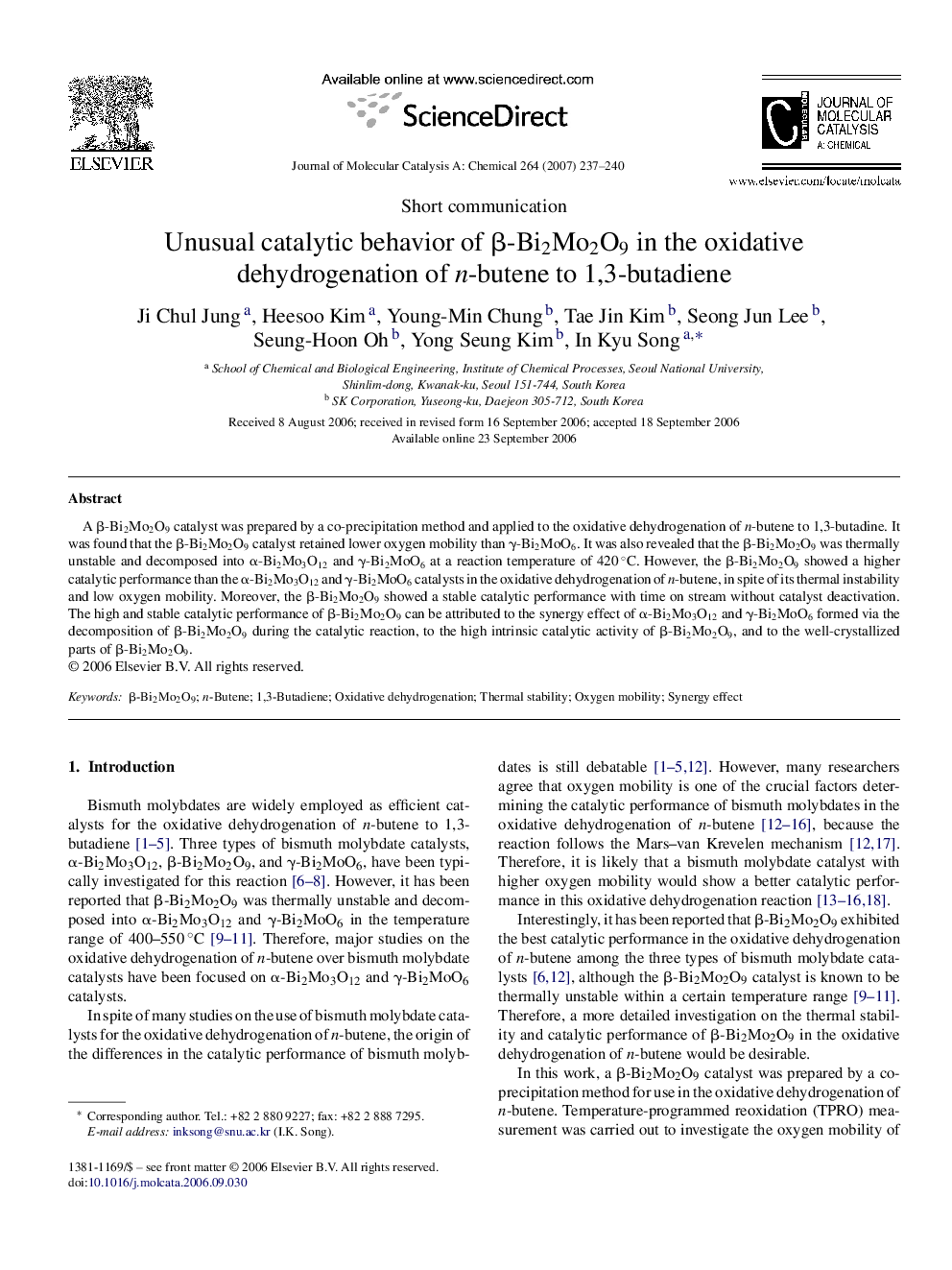| Article ID | Journal | Published Year | Pages | File Type |
|---|---|---|---|---|
| 68842 | Journal of Molecular Catalysis A: Chemical | 2007 | 4 Pages |
A β-Bi2Mo2O9 catalyst was prepared by a co-precipitation method and applied to the oxidative dehydrogenation of n-butene to 1,3-butadine. It was found that the β-Bi2Mo2O9 catalyst retained lower oxygen mobility than γ-Bi2MoO6. It was also revealed that the β-Bi2Mo2O9 was thermally unstable and decomposed into α-Bi2Mo3O12 and γ-Bi2MoO6 at a reaction temperature of 420 °C. However, the β-Bi2Mo2O9 showed a higher catalytic performance than the α-Bi2Mo3O12 and γ-Bi2MoO6 catalysts in the oxidative dehydrogenation of n-butene, in spite of its thermal instability and low oxygen mobility. Moreover, the β-Bi2Mo2O9 showed a stable catalytic performance with time on stream without catalyst deactivation. The high and stable catalytic performance of β-Bi2Mo2O9 can be attributed to the synergy effect of α-Bi2Mo3O12 and γ-Bi2MoO6 formed via the decomposition of β-Bi2Mo2O9 during the catalytic reaction, to the high intrinsic catalytic activity of β-Bi2Mo2O9, and to the well-crystallized parts of β-Bi2Mo2O9.
Graphical abstractA β-Bi2Mo2O9 catalyst was prepared by a co-precipitation method for use in the oxidative dehydrogenation of n-butene. It was found that the β-Bi2Mo2O9 catalyst showed a high and stable catalytic performance without catalyst deactivation, in spite of its thermal instability and low oxygen mobility. Figure optionsDownload full-size imageDownload as PowerPoint slide
